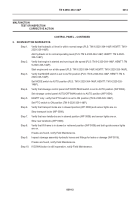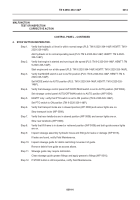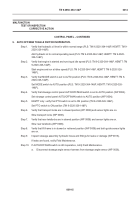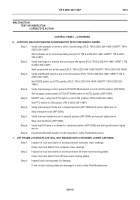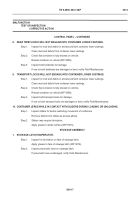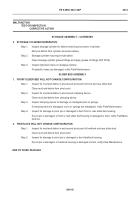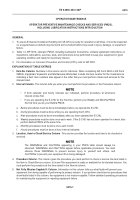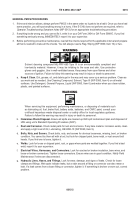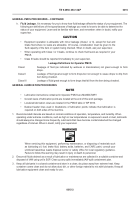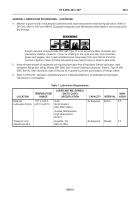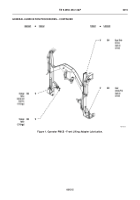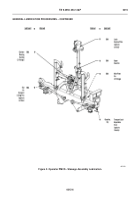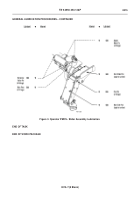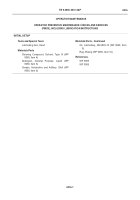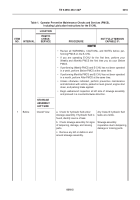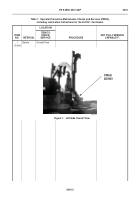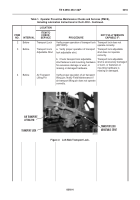TB-9-3950-253-13-P
PALLETIZED LOAD SYSTEM TRUCK, M1075 and M1075A1 (PLS) AND HEAVY EXPANDED MOBILITY TACTICAL TRUCK, M1120, M1120A2, AND M1120A4 (HEMTT), ENHANCED CONTAINER HANDLING UNIT (E-CHU)
TECHNICAL BULLETIN; OPERATOR AND FIELD MAINTENANCE, INSTALLATION INSTRUCTIONS, AND REPAIR PARTS AND SPECIAL TOOLS LIST
JULY 2009
TB-9-3950-253-13-P - Page 139 of 704
0015-3
TB 9-3950-253-13&P
0015
GENERAL PMCS PROCEDURES – CONTINUED
h.
Fluid Leakage.
It is necessary for you to know how fluid leakage affects the status of your equipment. The
following are definitions of the types/classes of leakage you need to know to be able to determine the
status of your equipment. Learn and be familiar with them, and remember: when in doubt, notify your
supervisor.
CAUTION
•
Equipment operation is allowable with minor leakage (Class I or II), except for fuel and
brake fluid where no leaks are allowable. Of course, consideration must be given to the
fluid capacity of the item or system being checked. When in doubt, ask your supervisor.
•
When operating with Class I or II leaks, continue to check fluid levels as required in your
PMCS.
•
Class III leaks should be reported immediately to your supervisor.
Leakage Definitions for Operator PMCS
Class I
Seepage of fluid (as indicated by wetness or discoloration) not great enough to form
drops.
Class II
Leakage of fluid great enough to form drops but not enough to cause drops to drip from
item being checked.
Class III
Leakage of fluid great enough to form drops that fall from the item being checked.
GENERAL LUBRICATION PROCEDURES
00015
NOTE
•
Lubrication instructions contained in Operator PMCS are MANDATORY.
•
Overall views of lubrication points are located at the end of this work package.
•
Localized lubrication views are located in the PMCS table in WP 0016.
•
Dashed leader lines used in illustrations of lubrication points indicate that lubrication is
required on both sides of the machine.
1. Recommended intervals are based on normal conditions of operation, temperature, and humidity. When
operating under extreme conditions, such as high or low temperatures or exposure to sand or dust, lubricants
should always be changed more frequently. Lubricants that have become contaminated will be changed
regardless of interval. When in doubt, notify your supervisor.
WARNING
When servicing this equipment, performing maintenance, or disposing of materials such
as lubricating oil, fuel, brake fluid, battery acids, batteries, and CARC paint, consult your
unit/local hazardous waste disposal center or safety office for local regulatory guidance.
Failure to follow this warning may result in injury or death to personnel.
2. Ensure all fluids drained as a result of lubrication or maintenance are collected in a suitable container and
disposed of IAW using unit’s SOP. Clean up any spills immediately IAW spill containment plan.
3. Keep all lubricants in a closed container and store in a clean, dry place away from extreme heat. Keep
container covers clean and do not allow dust, dirt, or other foreign material to mix with lubricants. Keep all
lubrication equipment clean and ready for use.
Back to Top

